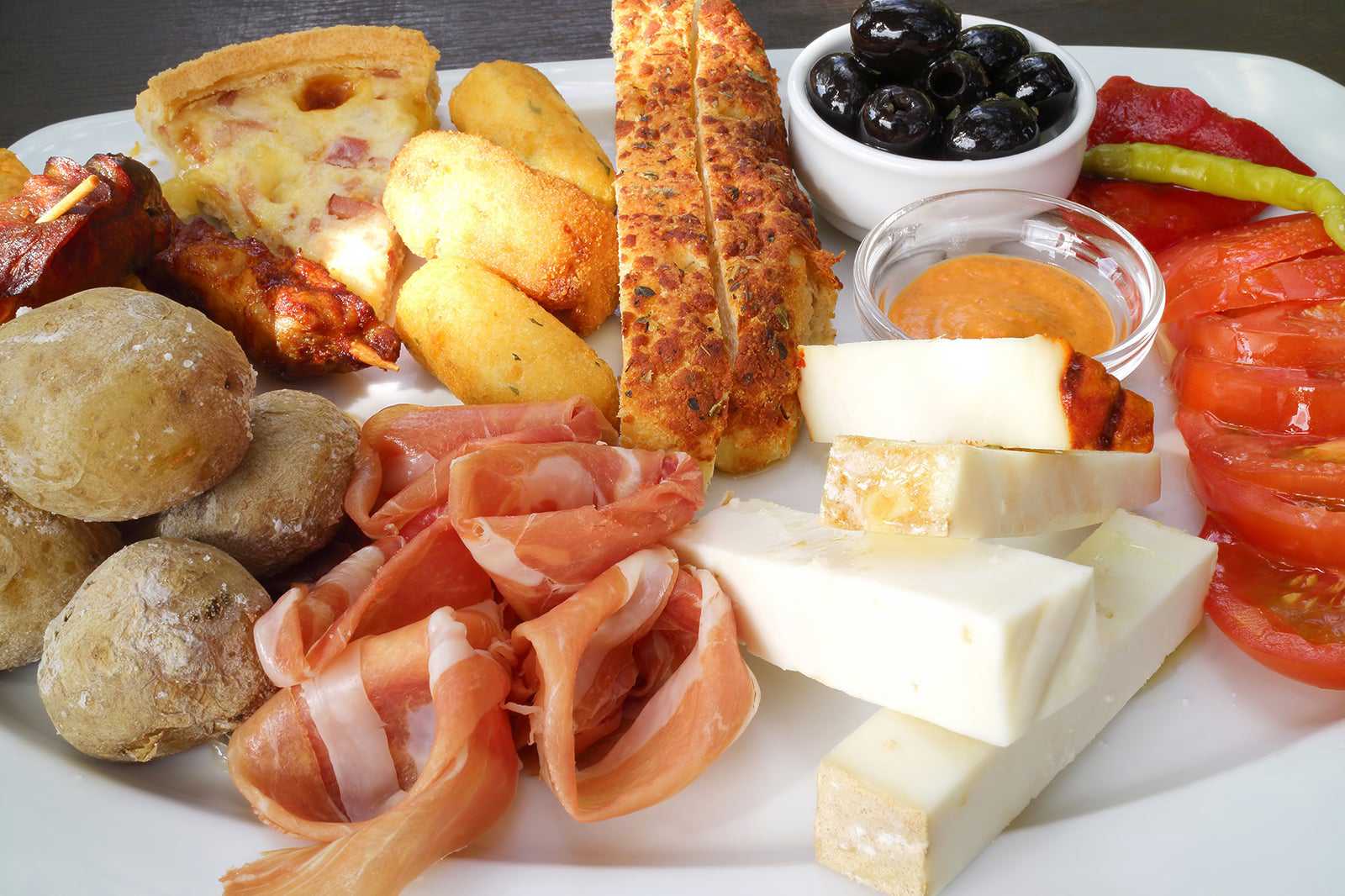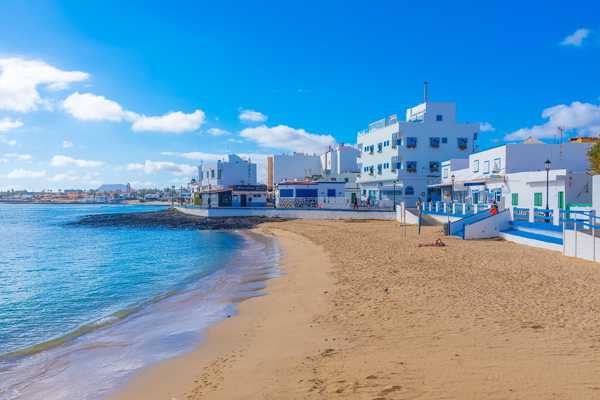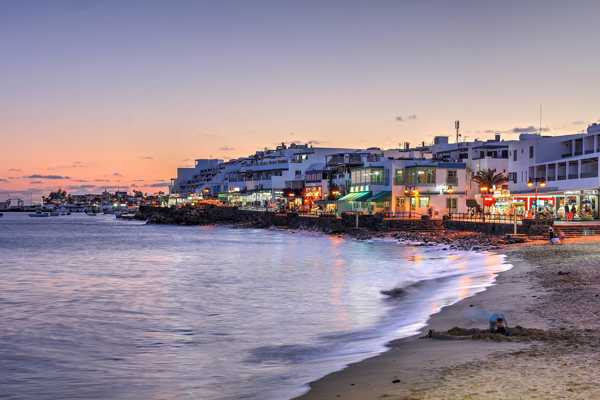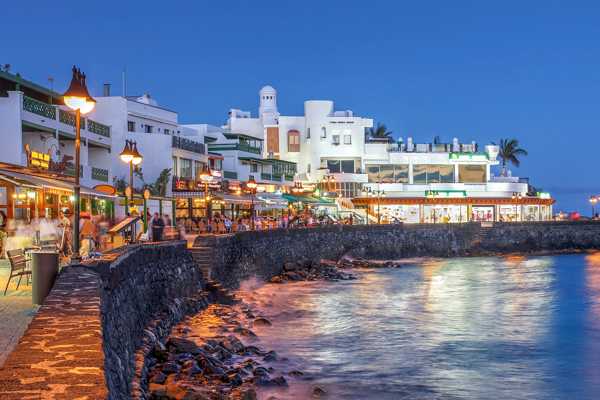The best local dishes from the Canary Islands range from hearty carb-infused stews to spicy salsas and delectable desserts. This guide is for culinary adventurers, especially if you love sampling the local food wherever you go. The world of Canarian cuisine is a great one to discover.
The island chain is most famed for its beautiful beaches and towering volcanoes, but there’s a lot to be said for its local dishes. As the crossroads between Europe and Africa, the islands draw culinary inspiration from a melting pot of cultures. And with a temperate year-round climate and fields of fertile volcanic soil, Canarian cuisine is both flavoursome and unique. Try these delicious local dishes when visiting the archipelago.
- 1
Canarian ropa vieja
A traditional local stew
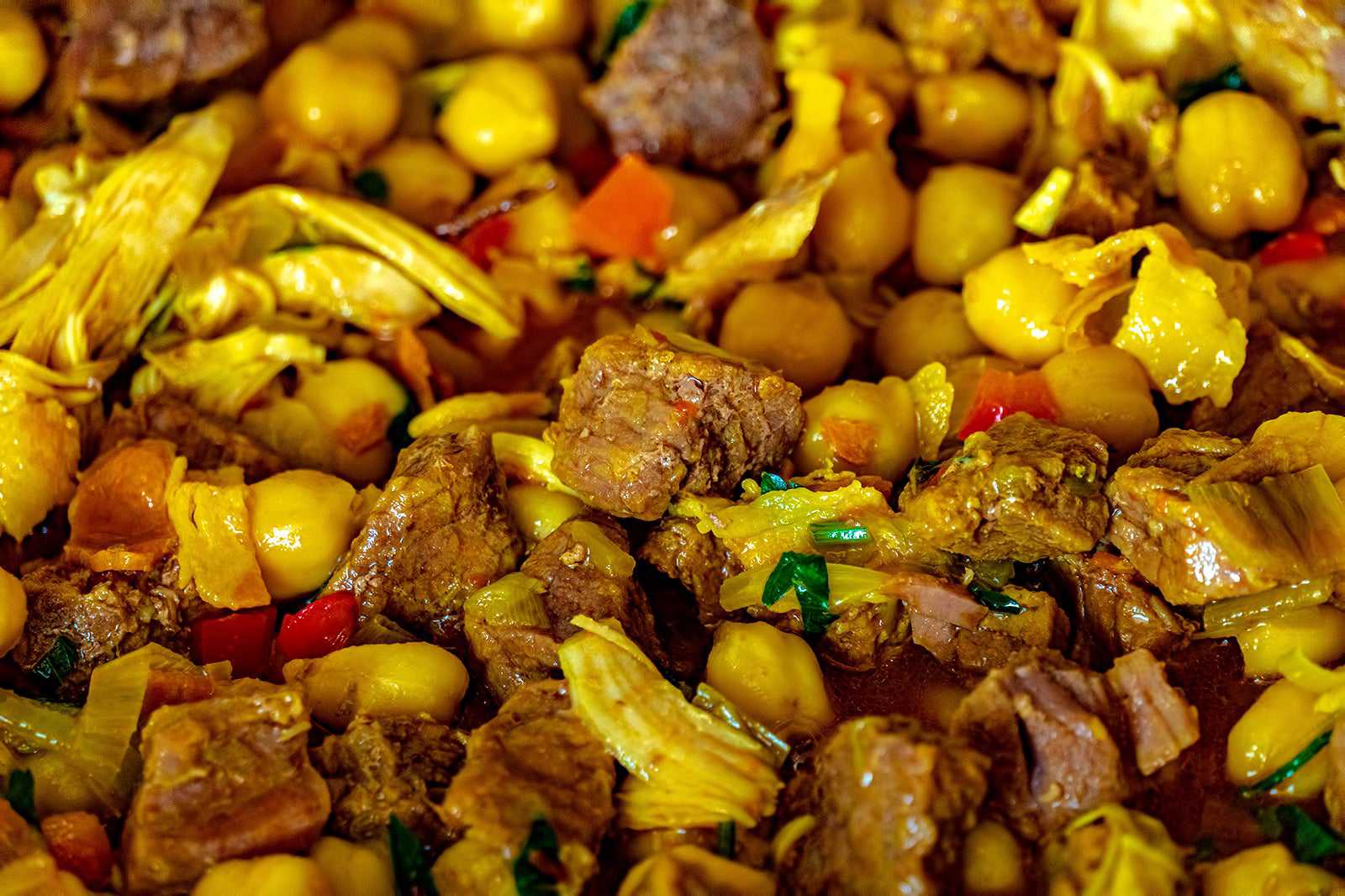
- Gastronomie
Ropa vieja is a mouthwatering meat-and-vegetable Canarian stew. Interestingly, it translates to “old clothes” in English. But don’t let that turn you off – you won’t find any worn-out rags in your broth. The hearty concoction’s namesake likely arose because it’s commonly cooked using leftover puchero, a similar Spanish dish.
The precise ingredients vary between restaurants – no 2 renditions are ever exactly the same. On the whole, though, you can expect to enjoy beef, pork, or chicken with a generous serving of vegetables, including potatoes. Garbanzo beans (chickpeas) add extra oomph to this hearty stew.
- 2
Papas arrugadas
A salty Canarian snack
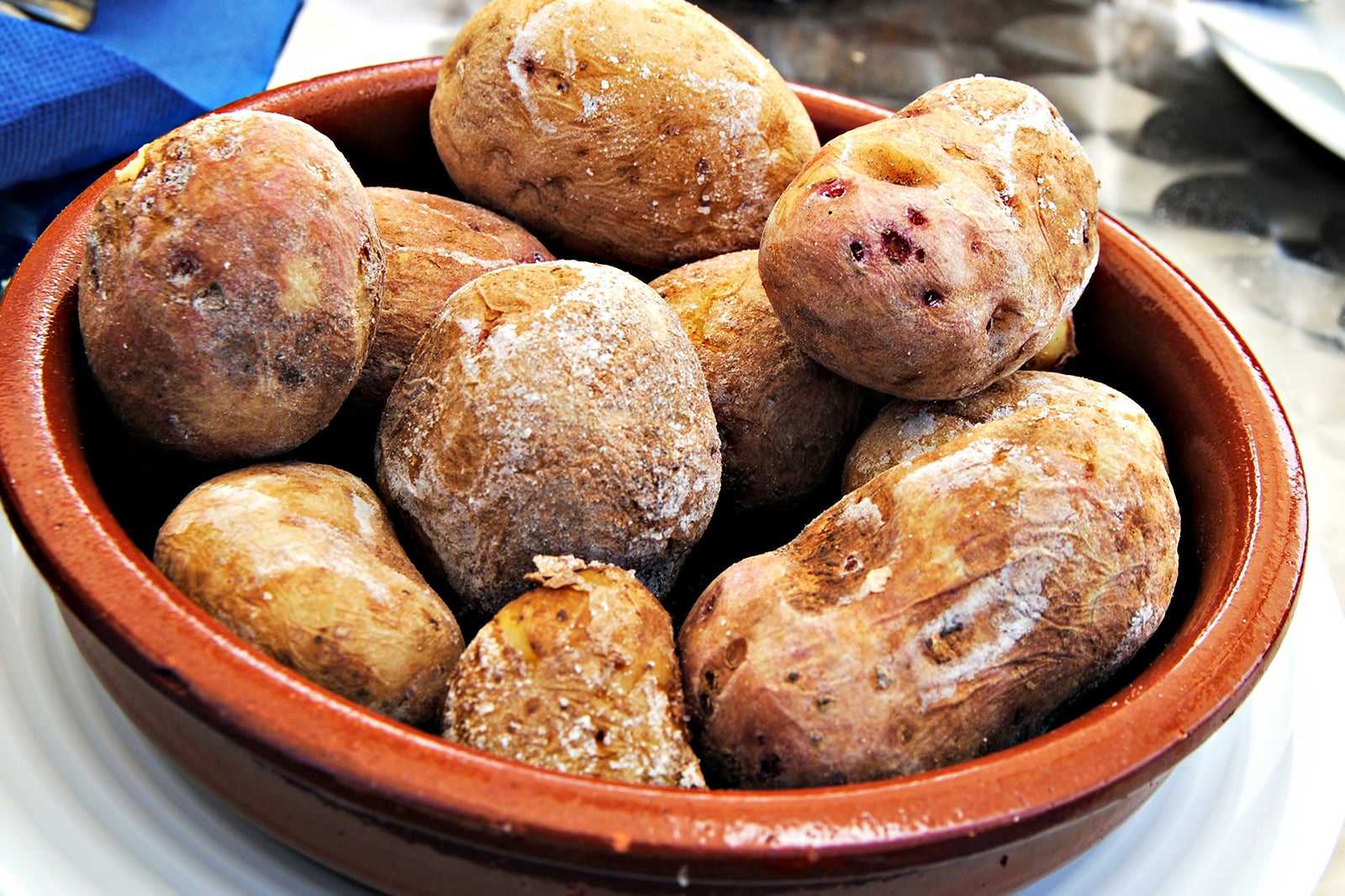
- Gastronomie
Papas arrugadas is the signature Canary Islands snack – these scrumptious salted potatoes are ubiquitous on all corners of the archipelago. Meaning “wrinkled potatoes” in English, the easy-to-prepare dish involves boiling unpeeled spuds in heavily salted water (seawater was once used). The potatoes are then placed in an empty pot to evaporate excess moisture and obtain that lovely wrinkled texture.
The Canary Island’s unique volcanic soil adds a distinct flavour to the potatoes, which then receive an extra sprinkling of salt on top. Next, the chef smothers the spuds in a generous layer of mojo, a delicious Canarian-style spicey sauce. Order it with an ice-cold cerveza (beer) to counterbalance the salt.
- 3
Caldo de papas
A Canarian take on the ubiquitous potato soup
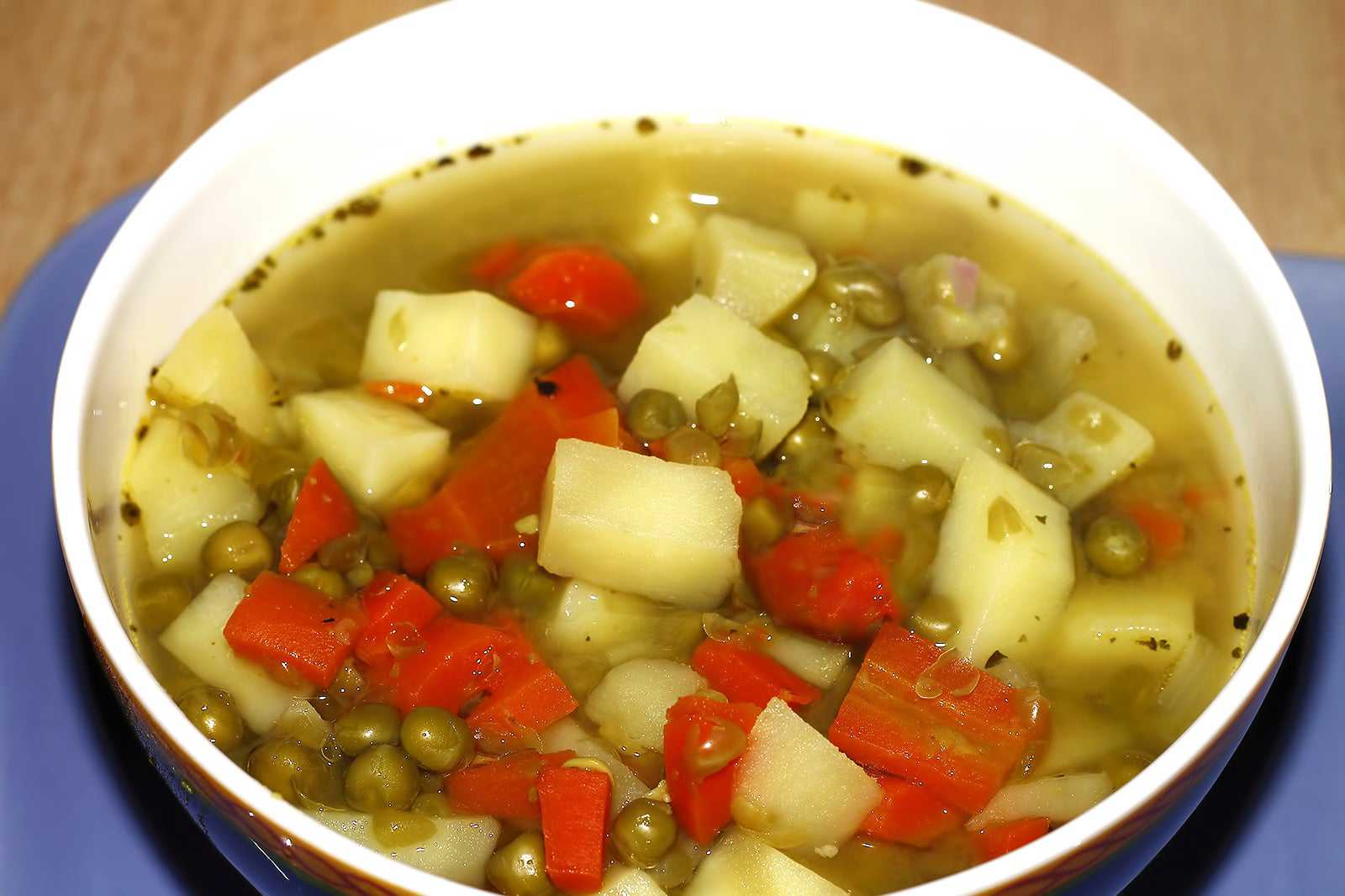
- Gastronomie
Caldo de papas means “potato soup” in English, and that’s pretty much what you can expect. But while the famous Canary Islands potato is the star of the show, a slew of other ingredients add interest to each bowl. The precise combination varies – common additions include cilantro, tomatoes, capsicum, saffron, and onions.
To beef up the dish, your chef will crack 2 eggs into the pot and leave them for a few minutes to poach. As this thick, starchy soup doesn’t contain any meat, it’s a great go-to option for vegetarians visiting the islands.
- 4
Sancocho canario
A Canarian fish dish with potatoes and gofio
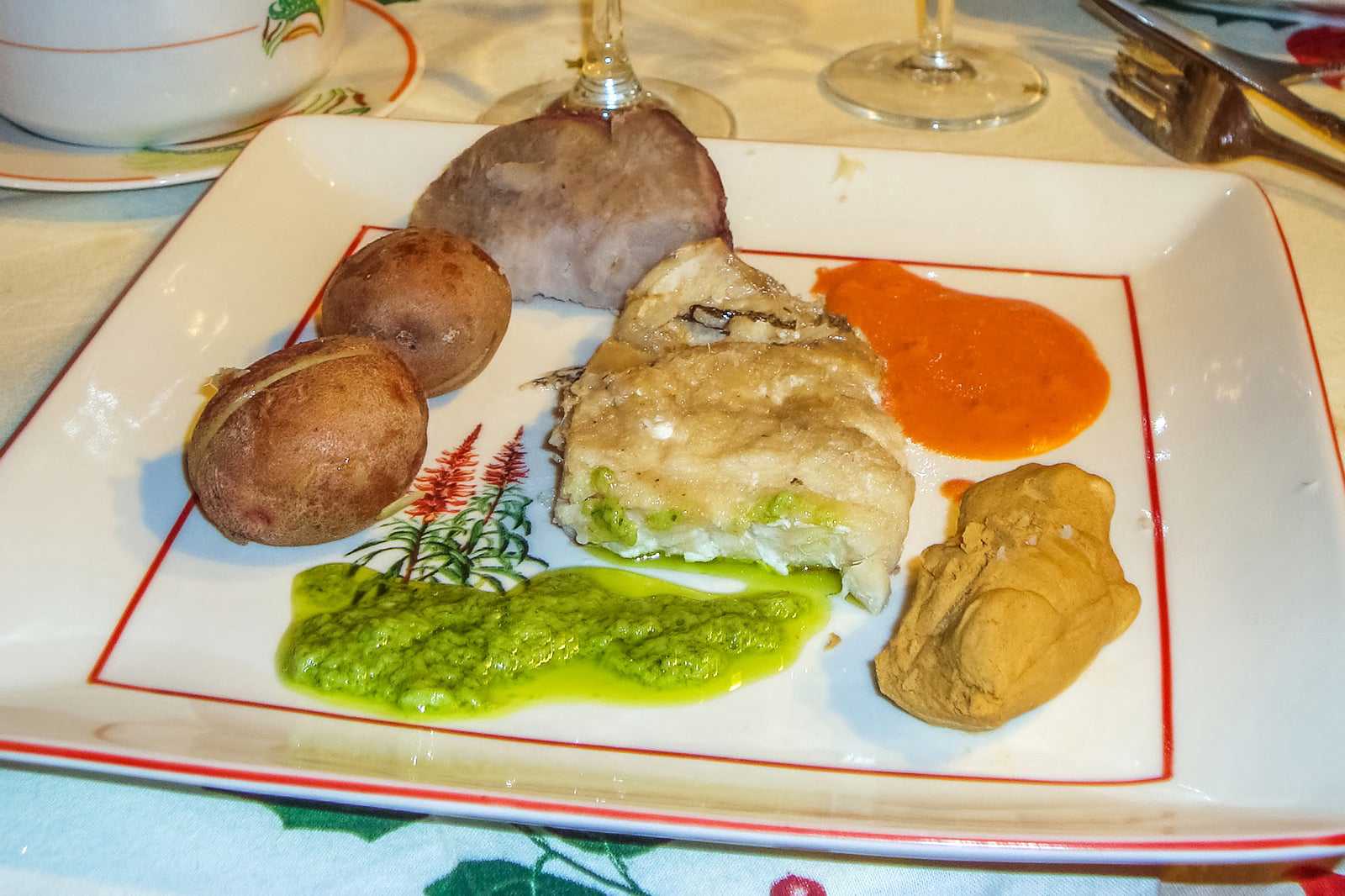
- Gastronomie
Having sancocho canario is a superb way to sample fresh local seafood – after all, fish are a steadfast staple of the Canarian diet. This light, healthy dish requires grilling a whole fish and serving it alongside papas arrugadas and gofio (roasted grain flour). Most local folks drip a slathering of spicy sauce on top for a flavour kick.
Local restaurants typically use cherne (a chunky white cod-like fish), stoker, or seabass, as these 3 species are fished heavily all around the islands. Mass migration has seen the traditional recipe spread to Latin America – it’s particularly popular in the Dominican Republic and Colombia.
photo de Canario1 (CC BY-SA 4.0) modifiée
- 5
Pescado seco
Dried dish preserved in an ancient way
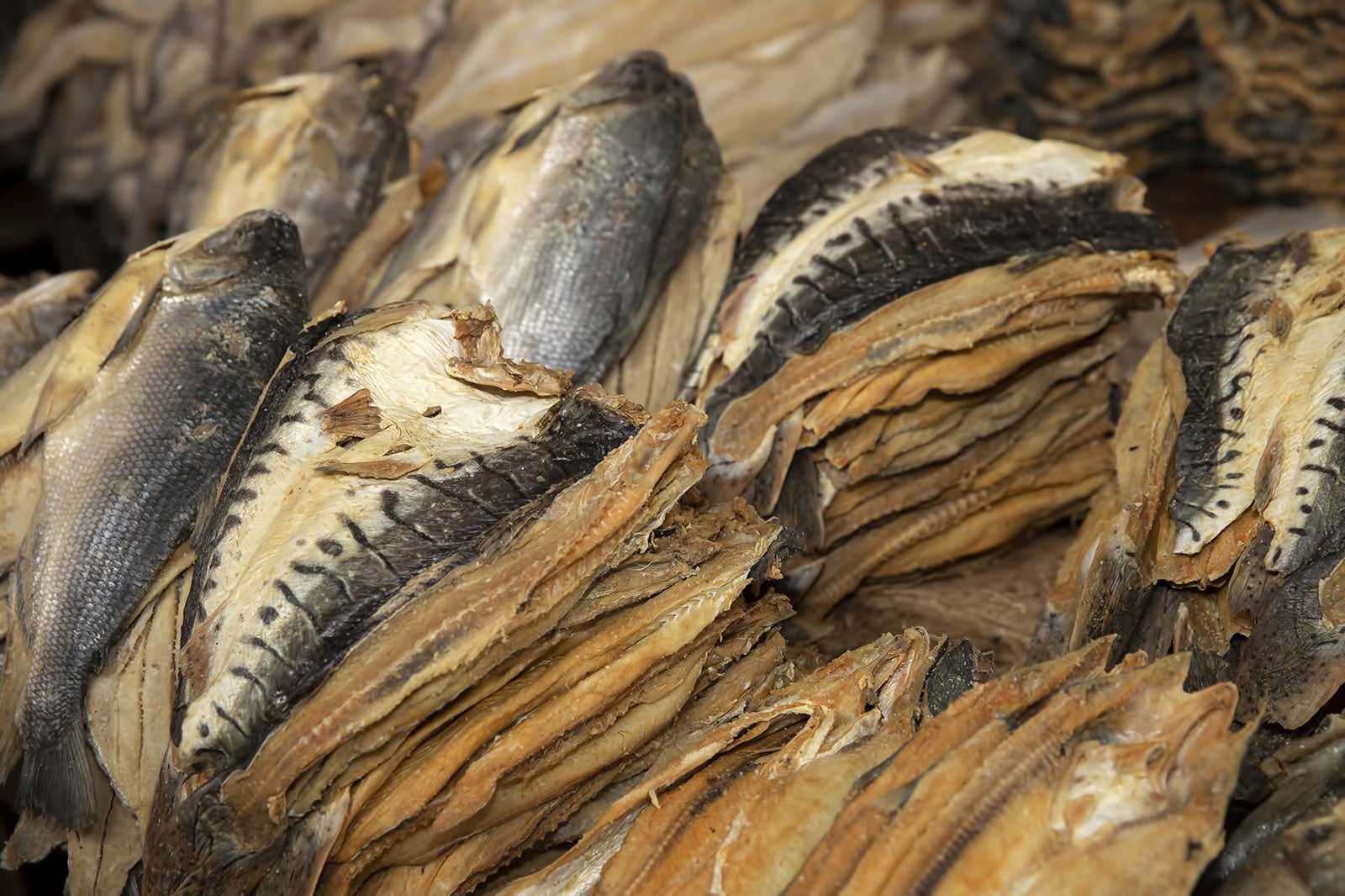
- Gastronomie
Pescado seco, or “dried fish,” is an age-old Canarian tradition that still thrives in the modern age. Back in the days before refrigeration, the local inhabitants would preserve fish to extend its shelflife. The process requires cleaning, gutting, and salting the catch before hanging it up outside to dry in the sun for 4 days.
Small species like parrotfish and wreckfish react exceptionally well to the preservation process, although other varieties may be used. The result? Firm flesh with a rich fishy flavour – though some may find it quite salty.
- 6
Adobo de cerdo
Slow-cooked pork shoulder with a tasty herb-infused marinade

- Gastronomie
Pork lovers visiting the Canaries will adore adobo de cerdo, a decadent fatty dish served in a rich, spicy sauce. The recipe uses pork shoulder, which is slow-cooked to juicy perfection (until it’s tender enough to fall off the bone) and served alongside sliced potatoes. While not exactly healthy, this mouthwatering treat is well worth the extra carbs.
What makes it so great? The secret is in the sauce. Abodo is a delicious liquid marinade made from garlic, oregano, paprika, salt, and sherry vinegar. If you’re craving a spicy kick, ask your server to make it picante (hot).
- 7
Baifo
A tantalising Canarian goat Christmas dish
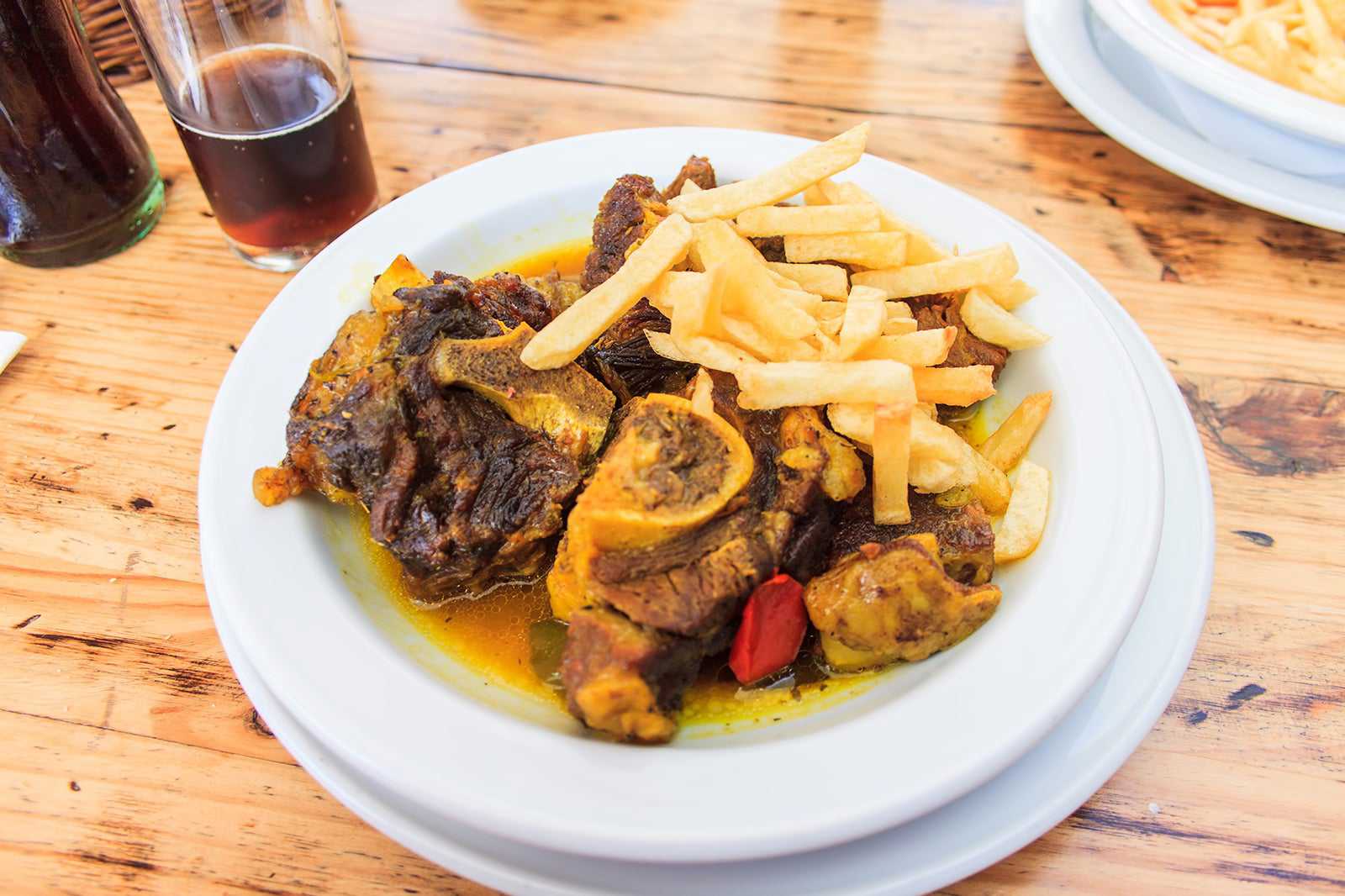
- Gastronomie
Baifo is the quintessential Canary Islands Christmas dish that features a local speciality: young Canarian goat. Centuries ago, early settlers from North Africa introduced this hardy animal to the archipelago. Their traditional goat rearing methods remain in use today on Fuerteventura, Tenerife, and La Palma.
The most tender goat meat hails from Tenerife, specifically the Güimar region, where the creatures can roam free. Each dish comes marinated in a rich, flavoursome sauce made from garlic, thyme, bay leaves, and oregano. Sadly, it’s tough to find a place serving this widely popular seasonal recipe outside the festive season.
- 8
Escaldón de gofio
An interesting purée based on a type of local Canarian flour
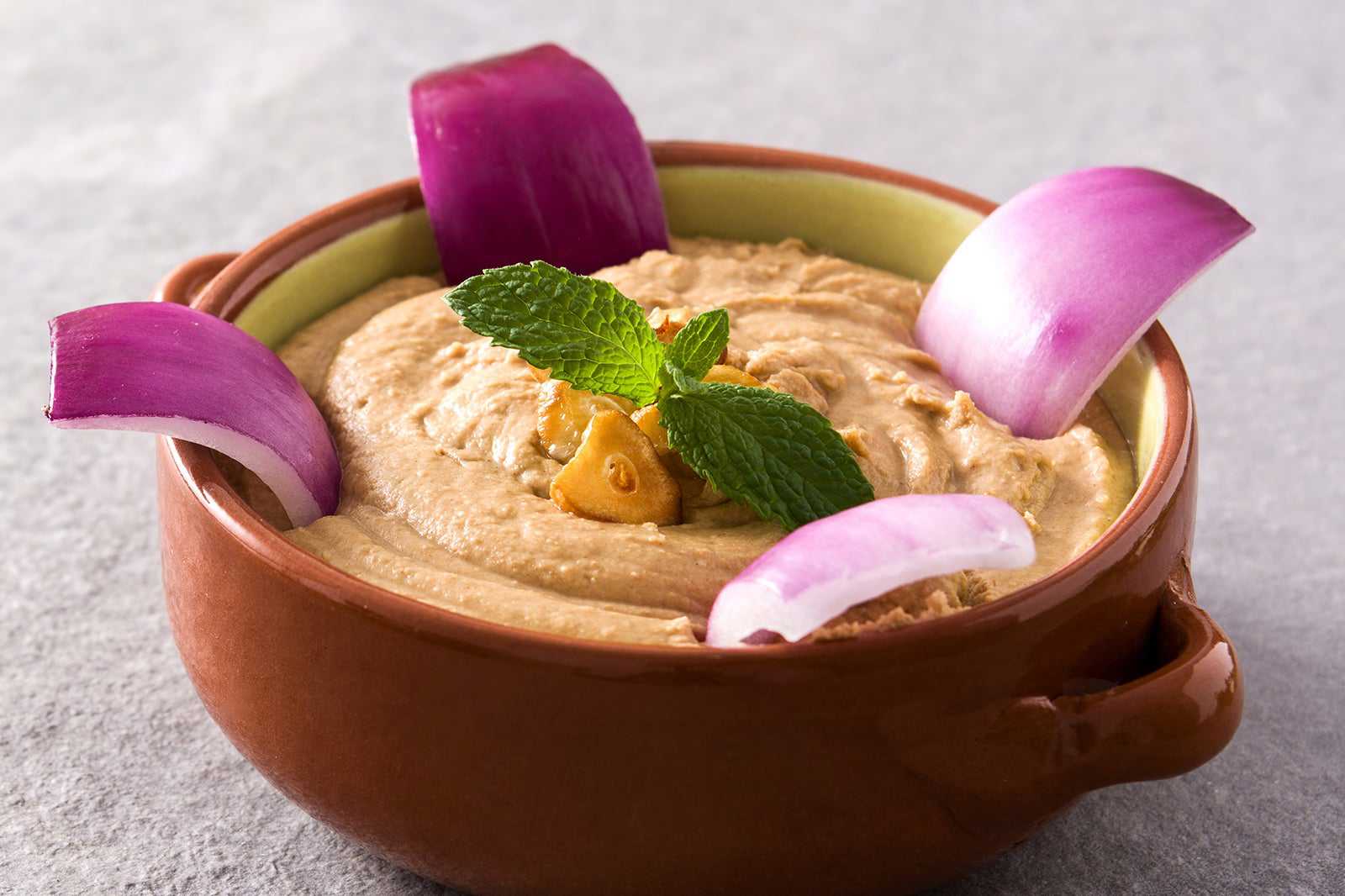
- Gastronomie
Escaldón de gofio, a tangy purée, is one of the more palatable ways to sample traditional Canarian gofio. Gofio is a type of flour made from roasted grains (corn, wheat, or maize) that features heavily in many local recipes – you’ll find it anywhere from soup to sauces and ice cream. The vitamin-packed superfood is said to have saved countless lives during the famines of the Spanish Civil War.
This particular escaldón de gofio is a delectable gofio-based purée served with sliced onions and spicy mojo sauce. Locals on the eastern islands tweak the recipe with a fresh fish broth (meat broths are more common in Tenerife). A word of caution, though: gofio is an acquired taste.
- 9
Mojo
The quintessential Canarian spicy sauce
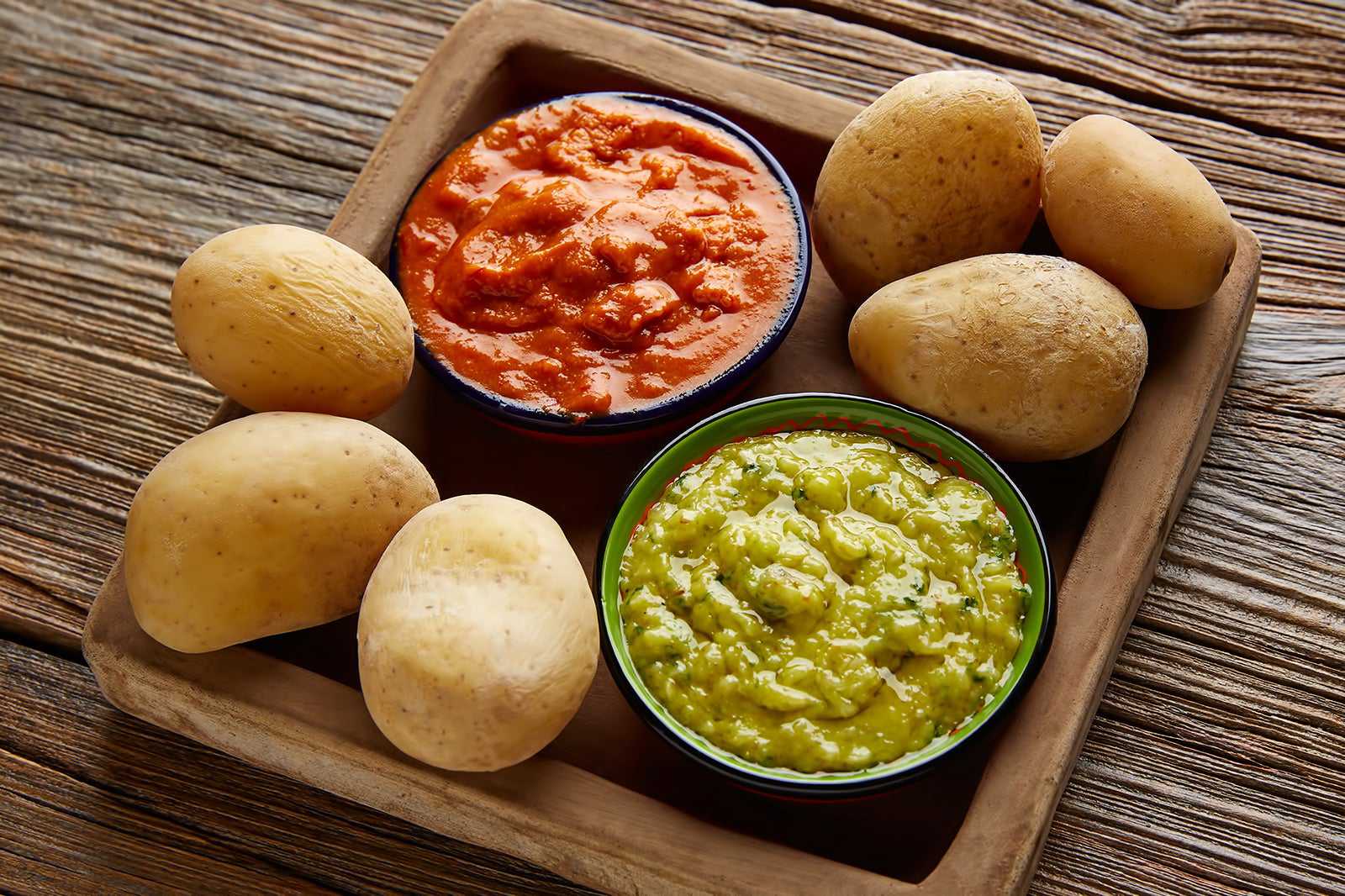
- Gastronomie
Mojo is the ever-present Canarian spicy sauce – local chefs slather it on almost every conceivable dish. From stews to soups and slow-roasted meats, you’d be hard-pressed to find a traditional Canarian restaurant that doesn’t do a mean mojo.
The sauce comes in 2 spicy varieties. Mojo rojo (red) features olive oil, sea salt, chilli, garlic, cumin, vinegar, and paprika. Its tasty green cousin, mojo verde, throws coriander, parsley, and green peppers into the mix – it tastes terrific on fish. Can’t get enough mojo? Most local produce markets sell the stuff in jars to take home as a souvenir.
- 10
Bienmesabe
It tastes good to me!
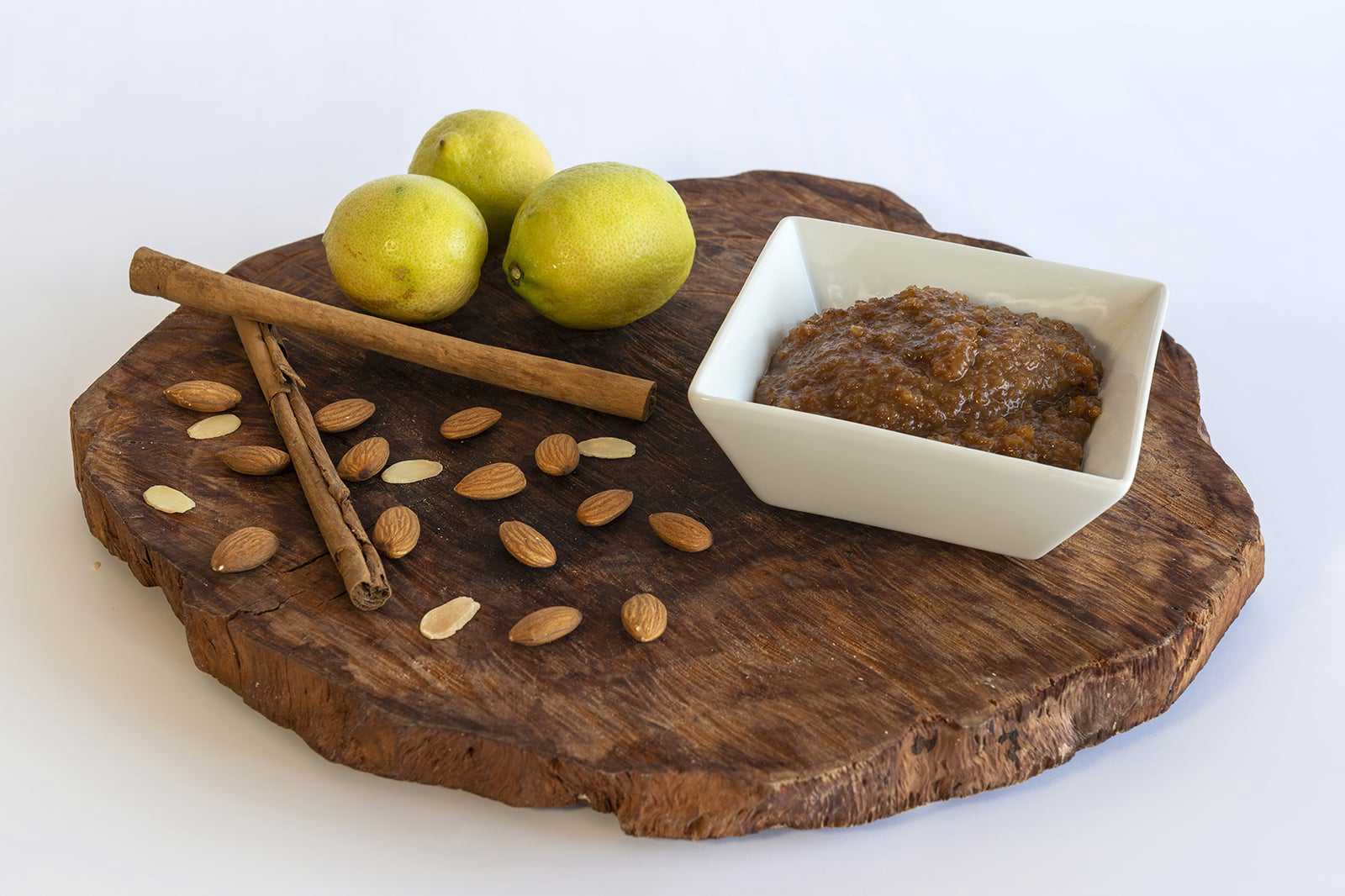
- Gastronomie
Bienmesabe is a popular purée made from cinnamon, honey, egg yolks, almonds, and sugar syrup, plus a hint of lemon zest. This divine dessert means, “it tastes good to me” in English, and we’d be inclined to agree.
The treat likely evolved from the Málagan delicacy bienmesabe antequerano, which has ancient Arabic origins. The local rendition is made almost exclusively on the island of Gran Canaria, where almond trees grow in abundance. But don’t worry, you’ll find it served fresh pretty much anywhere on the archipelago.
